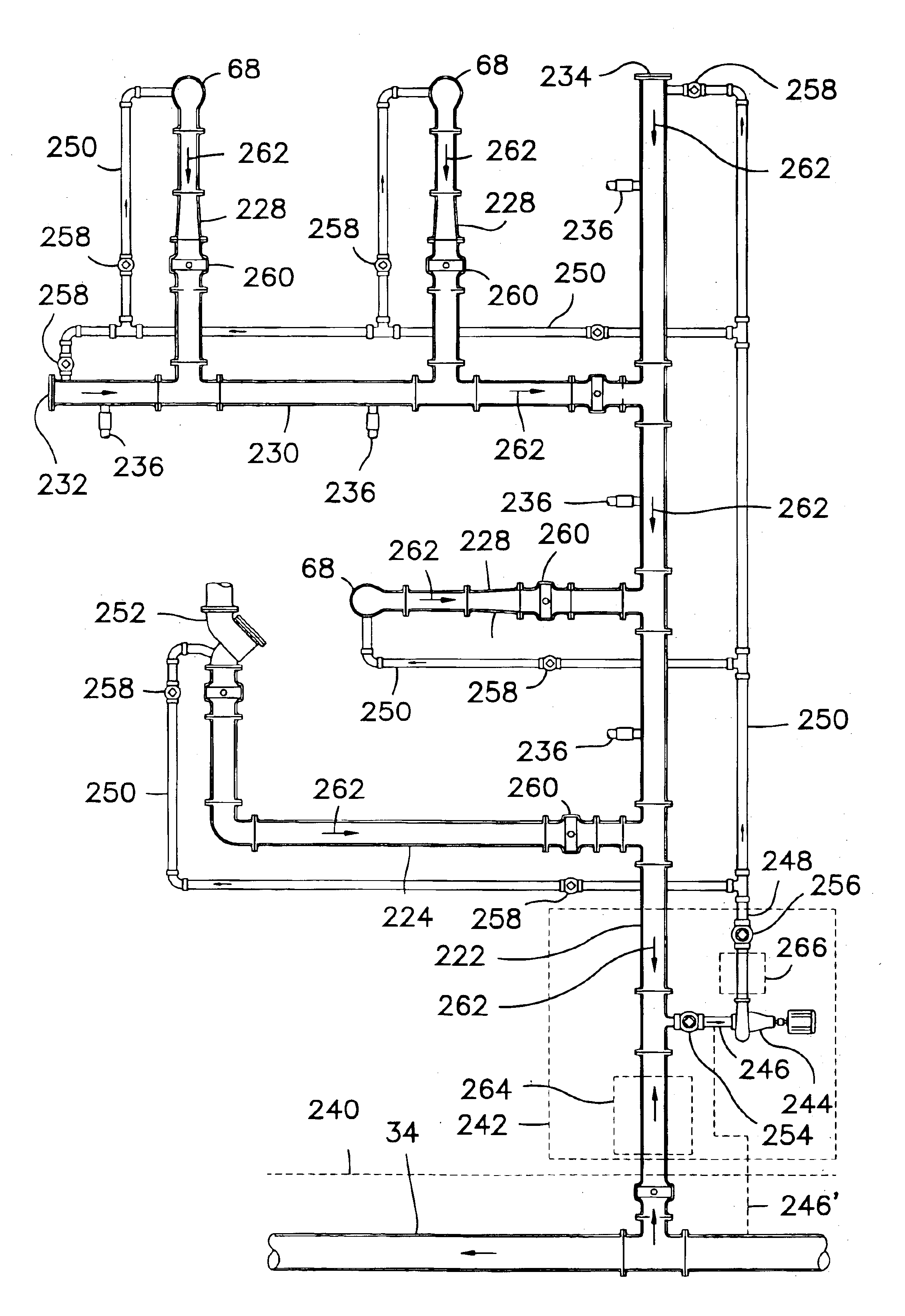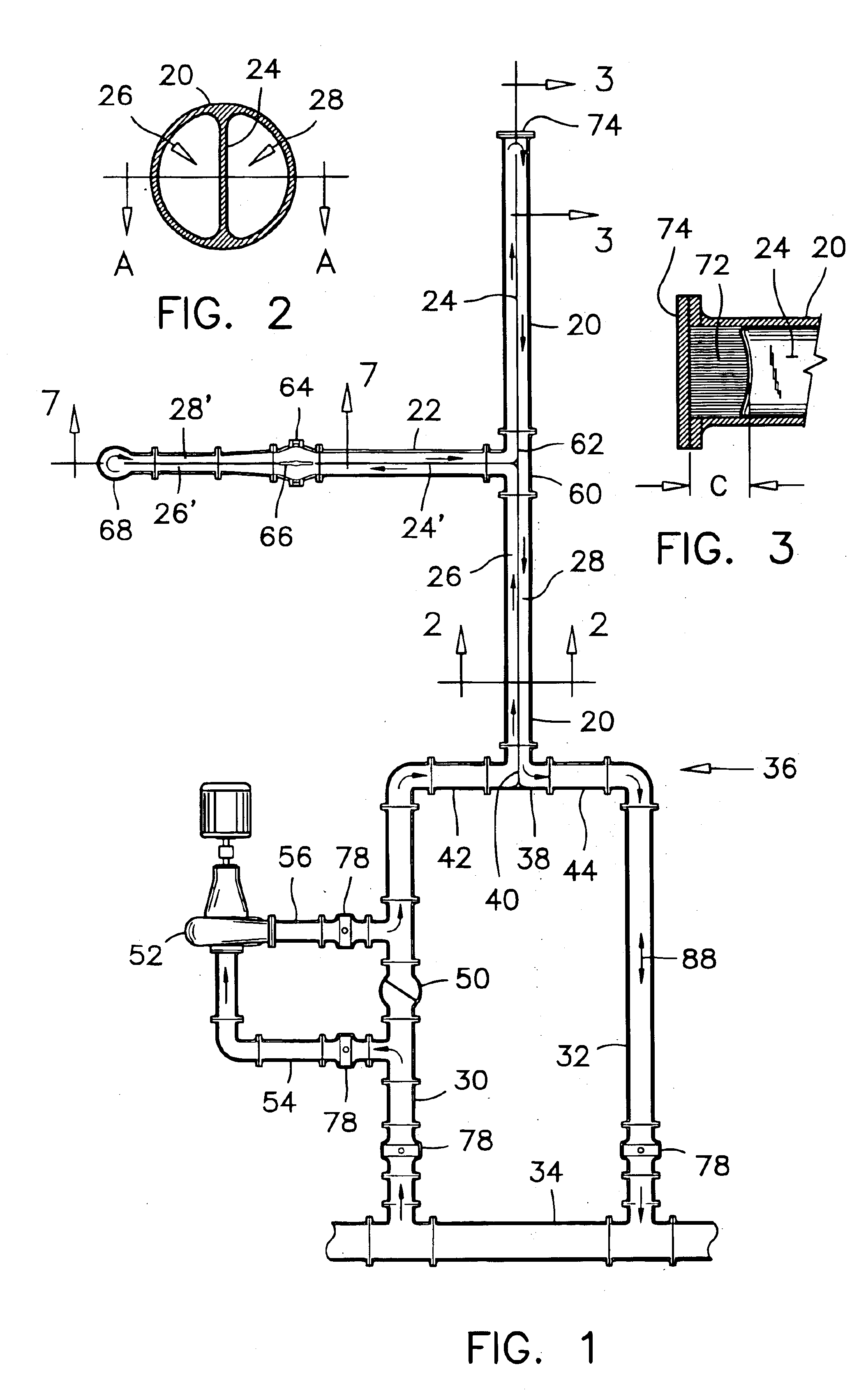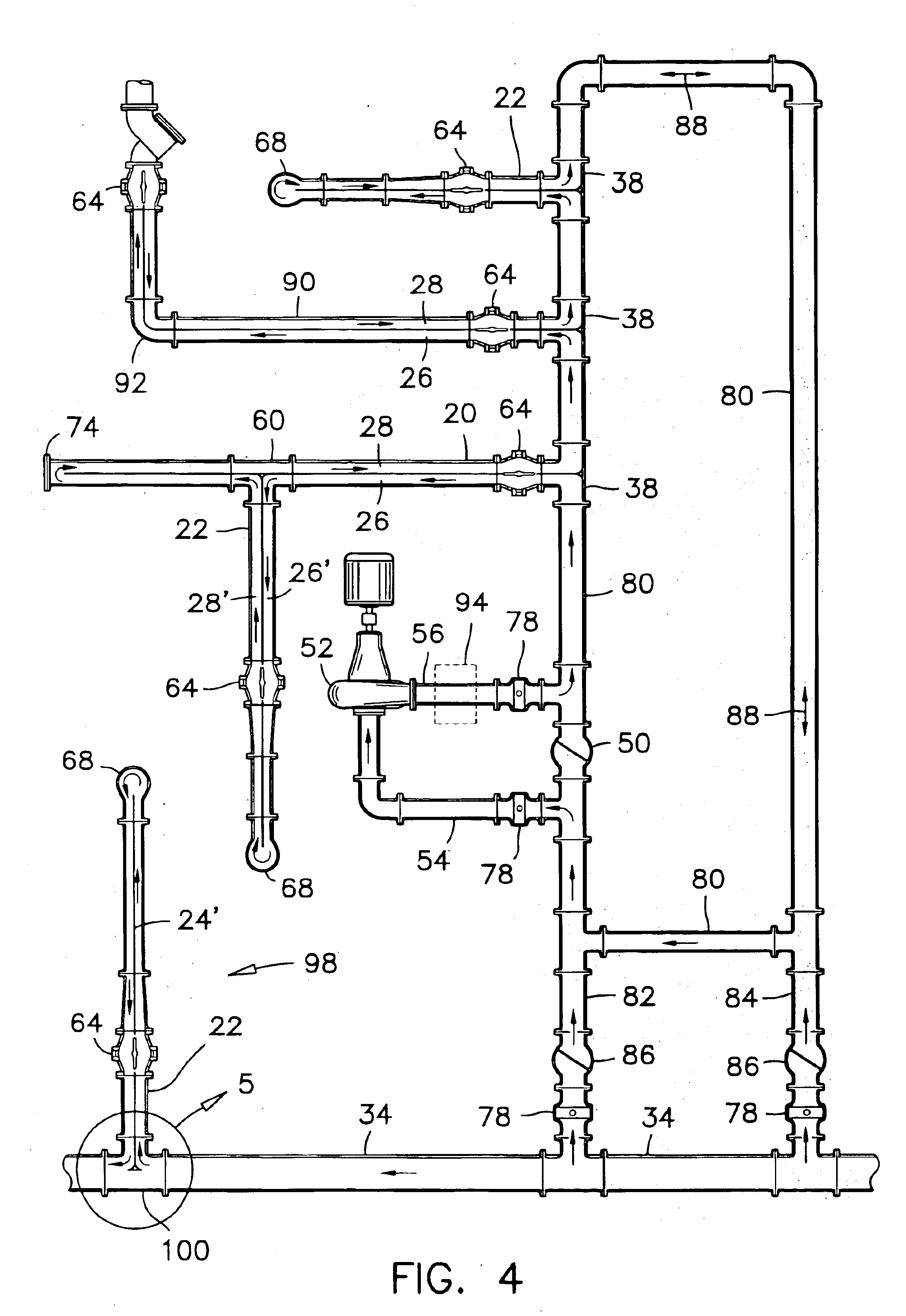Potable water circulation system
a technology of water circulation system and potable water, which is applied in the direction of water supply installation, machine/engine, and positive displacement liquid engine, etc., can solve the problems of contaminating the water, affecting the health of users, and large water mains that may be less acceptable down the line, so as to achieve easy installation and operation, and easy construction
- Summary
- Abstract
- Description
- Claims
- Application Information
AI Technical Summary
Benefits of technology
Problems solved by technology
Method used
Image
Examples
Embodiment Construction
[0047]While this invention is susceptible of embodiments in many different forms, there are illustrated in the drawings and will be described in details herein four specific embodiments of the present invention, with the understanding that the present disclosure is to be considered as an example of the principles of the invention and is not intended to limit the invention to the embodiments illustrated and described. The four embodiments are presented herein to better illustrate various manners of construction, installation and operation of the potable water circulation systems according to the present invention.
[0048]Referring firstly to FIGS. 1 to 3, the first preferred embodiment of the present invention applies to the circulation of water inside a long branch pipe 20 of a municipal water distribution system, such as along a secondary street, and in one or more fire hydrant laterals 22 extending from the branch pipe. Most importantly, the branch pipe 20 is a partitioned pipe as i...
PUM
 Login to View More
Login to View More Abstract
Description
Claims
Application Information
 Login to View More
Login to View More - R&D
- Intellectual Property
- Life Sciences
- Materials
- Tech Scout
- Unparalleled Data Quality
- Higher Quality Content
- 60% Fewer Hallucinations
Browse by: Latest US Patents, China's latest patents, Technical Efficacy Thesaurus, Application Domain, Technology Topic, Popular Technical Reports.
© 2025 PatSnap. All rights reserved.Legal|Privacy policy|Modern Slavery Act Transparency Statement|Sitemap|About US| Contact US: help@patsnap.com



